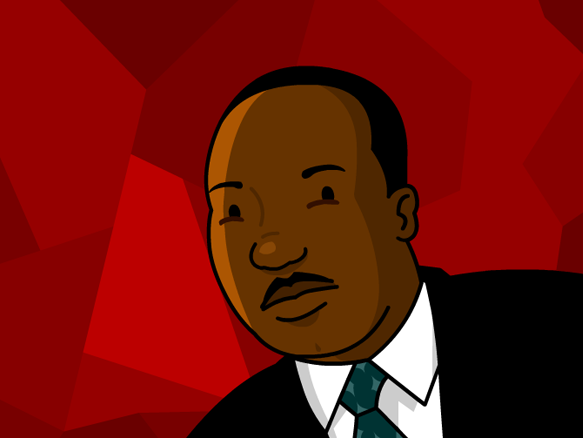

King’s speech was chosen, because “it was the best speech I ever read,” Rogers said in an interview. Why didn’t Rogers translate “The Star Spangled Banner,” or “The Constitution,” or something else? Ivory asked. I wanna have my chillun’ razed up and looked at 4 there charakter and not there color.” I still gotta dream way down deep inside me cuz weses livin’ in Ameriga. “Youse go back to Misipi, Alabamma, Souf Carolinie, Georgea and Louseeana, an’ don’t youse be whinin’ or conversatin’ ‘bout yer touchured soles.

Rogers about her version of King’s speech and concluded that she was not being malicious and did not intend to harm or demean anyone by using it in class. The principal said last week that he had viewed a snippet of the film and believes it does a good job of portraying how the economic system was developed.įuruta said he talked to English teacher Judith L. It gets their attention.”įuruta said the film has been shown in the West Covina district for about 12 years without any previous problems. It’s done in an entertaining way with one-liners. “The kids really enjoy it,” said Cimino, 53, a teacher for 28 years. He considers it to be a good instructional tool for teaching the principles of economics and does not demean any group. Neither video, however, is on the Los Angeles Unified School District’s or the Los Angeles County Office of Education’s approved list of films.Ĭimino, who is white, said he has shown the older film to his classes for three years. The center received no complaints about the original film, said Marge Kondash, supervisor of customer services. Although some of the same characters remain, they bear only slight resemblance to the originals.īoth films were distributed by Modern Talking Pictures, a Florida-based educational resource distribution center. But the firm withdrew the film only because it was outdated, she said.Ī new version, “The Return to Mocha,” was produced in 1986. “I said ‘Oh my gosh, I can’t believe this.’ ”Īmoco received a few written complaints about stereotyped characters in the film, said Judy Kaminsky, Amoco’s Foundation’s program adviser.

“I was really upset,” said the senior, who had just returned from a summer camp where racism and sexism were discussed. Students were laughing, and the teacher had a smirk on his face when Ian began talking in an exaggerated black dialect. “Miss Rachel,” an Anglo, walks the island wearing low-cut, revealing dresses, speaking in a sexy voice and selling melons.īrandon Ivory recalled how he felt while watching the film in teacher Ben Cimino’s class. Another character, Ian, is also black, with a big, Afro hairstyle, popular in the ‘70s, and bright red lips. “Bennie Six Toes,” a black, is the coconut seller. In the original film, “Big Daddy,” a bald, pot-bellied, cigar-smoking Anglo, runs the island. The film’s setting is a fictitious island with different ethnic groups speaking in exaggerated accents-including German, Italian, Middle Eastern, British and American Southern. in 1976, and distributed nationwide, primarily to schools. “The Kingdom of Mocha"-a cartoon showing how the world economic system evolved-was released by Amoco Oil Co. for the Advancement of Colored People, to the session. Ivory said she plans to bring Jimmie Dixson, acting president of the San Gabriel Valley branch of the National Assn. Furuta said he sent Ivory a letter expressing his concern about both matters, and they have scheduled a meeting for Wednesday.


 0 kommentar(er)
0 kommentar(er)
